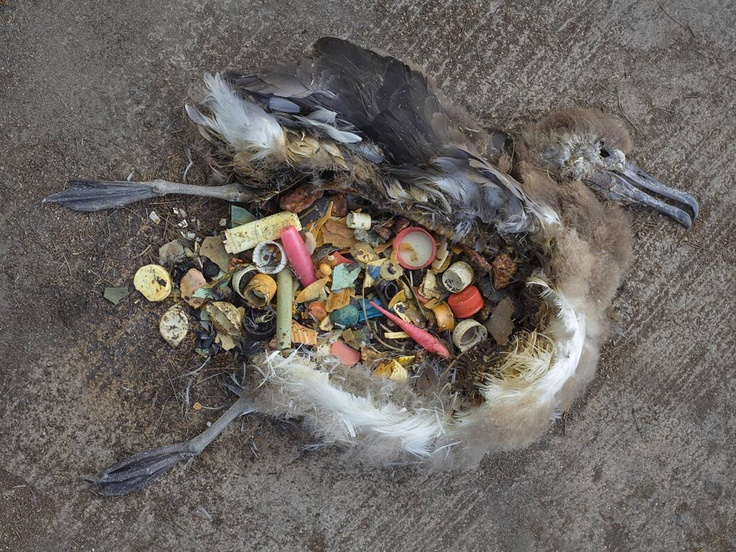
Individual or population effect? A decomposing Laysan Albatross chick with a heavy plastic load on Midway Atoll
Jesse Senko (School for the Future of Innovation in Society, Arizona State University, Tempe, USA) and colleagues have published open access in the journal Endangered Species Research reviewing evidence for population effects from plastic pollution in seabirds and other marine vertebrates: “no study in the past 50 yr reported direct evidence of population-level effects”.
The paper’s abstract follows:
“Plastic pollution is increasing rapidly throughout the world’s oceans and is considered a major threat to marine wildlife and ecosystems. Although known to cause lethal or sub-lethal effects to vulnerable marine megafauna, population-level impacts of plastic pollution have not been thoroughly investigated. Here, we compiled and evaluated information from peer-reviewed studies that reported deleterious individual-level effects of plastic pollution on air-breathing marine megafauna (i.e. seabirds, marine mammals, and sea turtles) worldwide, highlighting those that assessed potential population-level effects. Lethal and sub-lethal individual-level effects included drowning, starvation, gastrointestinal tract damage, malnutrition, physical injury, reduced mobility, and physiological stress, resulting in reduced energy acquisition and assimilation, compromised health, reproductive impairment, and mortality. We found 47 studies published between 1969 and 2020 that considered population-level effects of plastic entanglement (n = 26), ingestion (n = 19), or both (n = 2). Of these, 7 inferred population-level effects (n = 6, entanglement; n = 1, ingestion), whereas 19 lacked evidence for effects (n = 12, entanglement; n = 6, ingestion; n = 1, both). However, no study in the past 50 yr reported direct evidence of population-level effects. Despite increased interest in and awareness of the presence of plastic pollution throughout the world’s oceans, the extent and magnitude of demographic impacts on marine megafauna remains largely unassessed and therefore unknown, in contrast to well-documented effects on individuals. Addressing this major assessment gap will allow researchers and managers to compare relative effects of multiple threats—including plastic pollution—on marine megafauna populations, thus providing appropriate context for strategic conservation priority-setting.”
Reference:
Senko, J.F., Nelms, S.E., Reavis, J.L., Witherington, B., Godley, B.J. & Wallace, B.P. 2020. Understanding individual and population-level effects of plastic pollution on marine megafauna. Endangered Species Research 43: 234-252.
John Cooper, ACAP Information Officer, 15 October 2020

 Español
Español  English
English  Français
Français